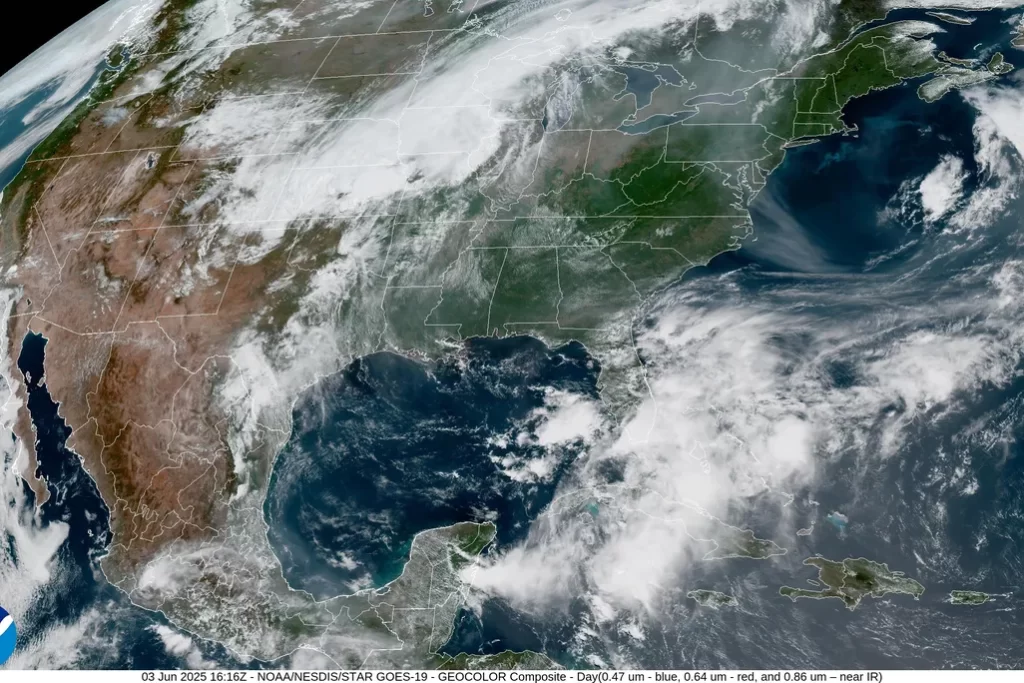Washington, June 4, 2025 —
A massive dust cloud from the Sahara Desert is making its way across the Atlantic Ocean and is expected to reach the southeastern regions of the United States within days. Areas in its path include Florida, Georgia, parts of Alabama, and the Carolinas, where air quality and visibility may be affected.
This weather event, known as the Saharan Air Layer (SAL), forms when dry, dust-laden air from North Africa is swept high into the atmosphere and carried westward by prevailing winds. Each year, such dust plumes travel thousands of kilometers, and this current system is reported to be among the season’s strongest so far.
Several Caribbean islands have already experienced the effects of the incoming dust, including reduced air clarity and warnings about poor air quality. Meteorological agencies in the U.S. are tracking the system closely, with experts predicting its arrival by mid to late week.
Health and Air Quality Concerns
Health professionals are advising individuals in affected areas, especially those with asthma or chronic respiratory issues, to stay updated on local air quality reports. Fine dust particles suspended in the air can cause discomfort, coughing, eye irritation, and shortness of breath.
“People with lung conditions or allergies should limit outdoor exposure when the dust levels rise,” said Dr. Andrea Cole, an environmental health expert. “Even healthy individuals may feel the effects if the concentration becomes too high.”
Air quality indexes in southern cities are expected to fluctuate as the dust cloud moves in, prompting temporary advisories or precautionary guidelines in some areas.
Environmental Effects and Atmospheric Changes
While the dust may bring health risks, it also has some atmospheric benefits. The dry air carried with the plume tends to suppress tropical storm formation, which could help delay or weaken early hurricane activity in the Atlantic basin. Additionally, the minerals in the dust act as natural fertilizers when deposited over land or sea.
The skies over affected areas are expected to appear hazy or muted, though residents may also witness more vivid sunrises and sunsets, caused by the scattering of sunlight through the fine particles.
Preparedness and Outlook
Federal and state agencies are urging the public to remain informed through official weather and air quality platforms. Using indoor air filtration, minimizing outdoor activities during high dust periods, and staying hydrated are simple yet effective precautions.
The dust event is forecast to last for several days before dissipating. Though such events are not unusual during summer, their intensity can vary, and this particular plume is drawing attention for its size and reach.
Meteorologists will continue to provide updates as the situation evolves. Residents in southeastern states are advised to take necessary steps to reduce exposure and protect their health until conditions improve.



